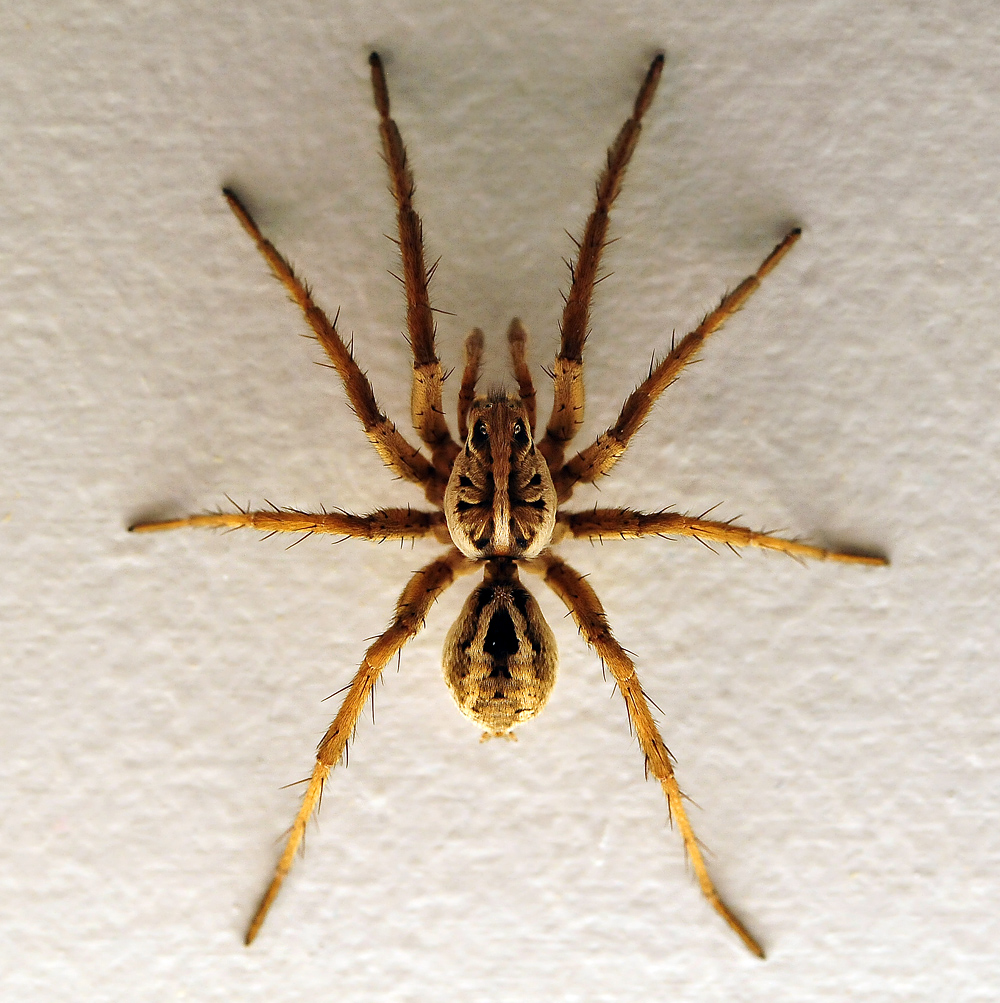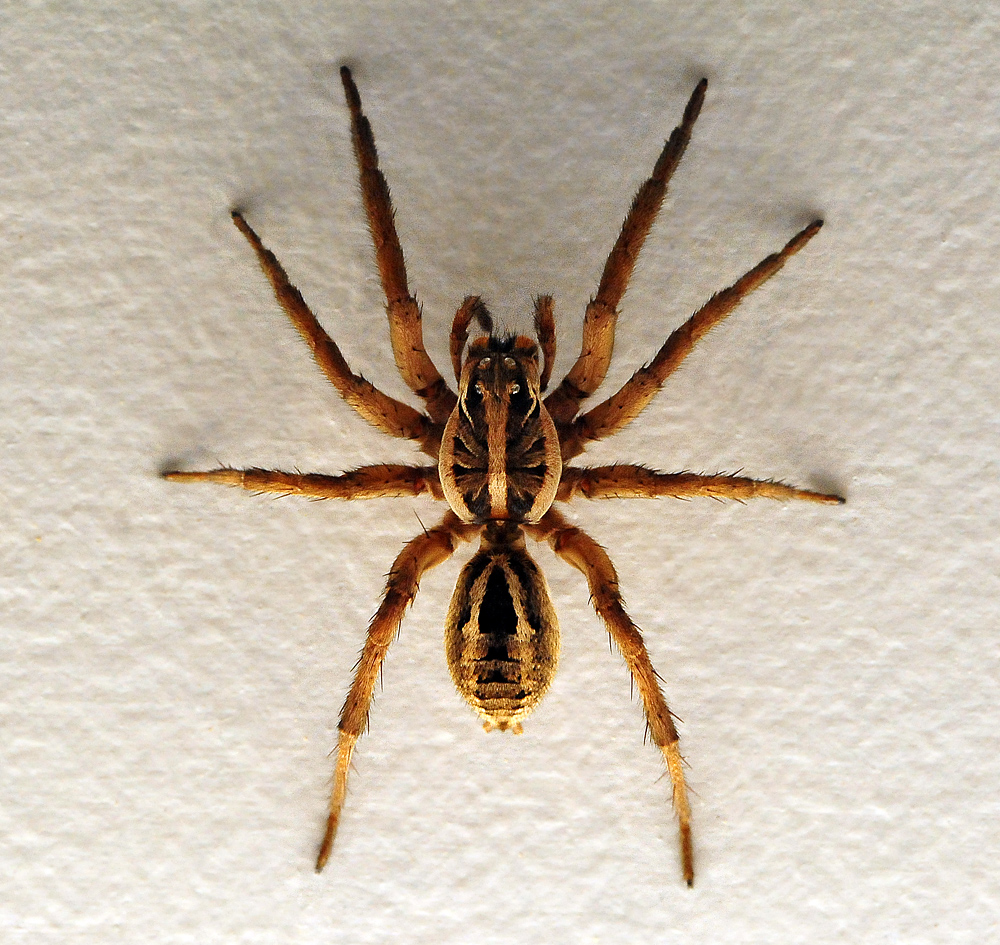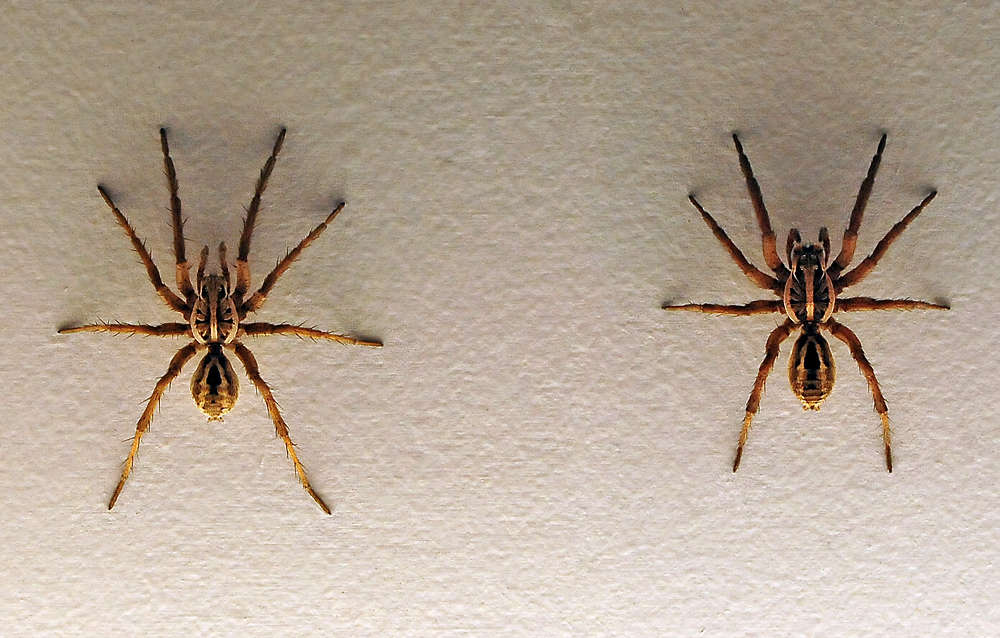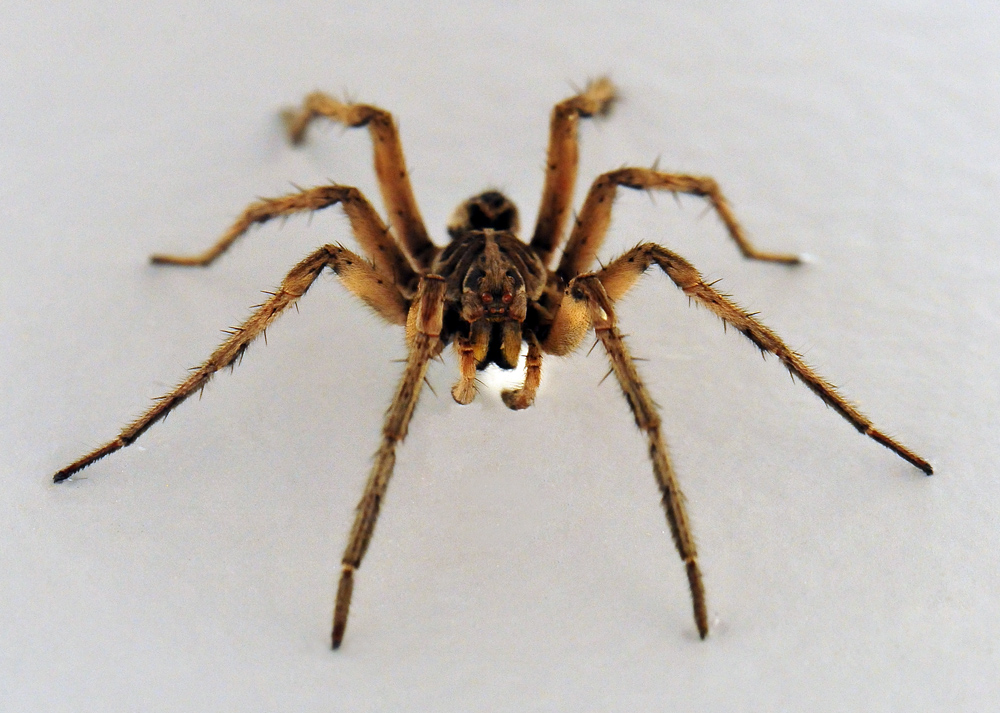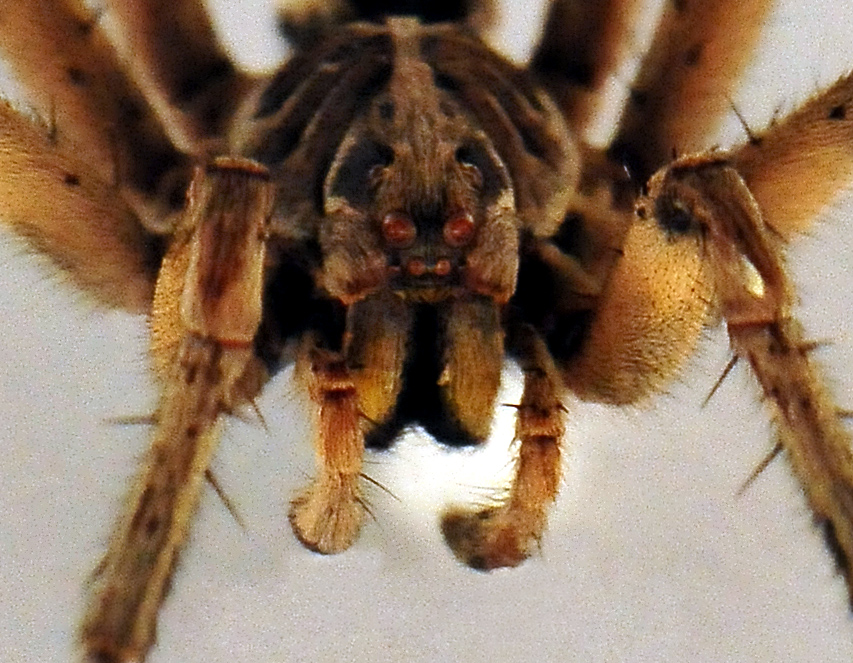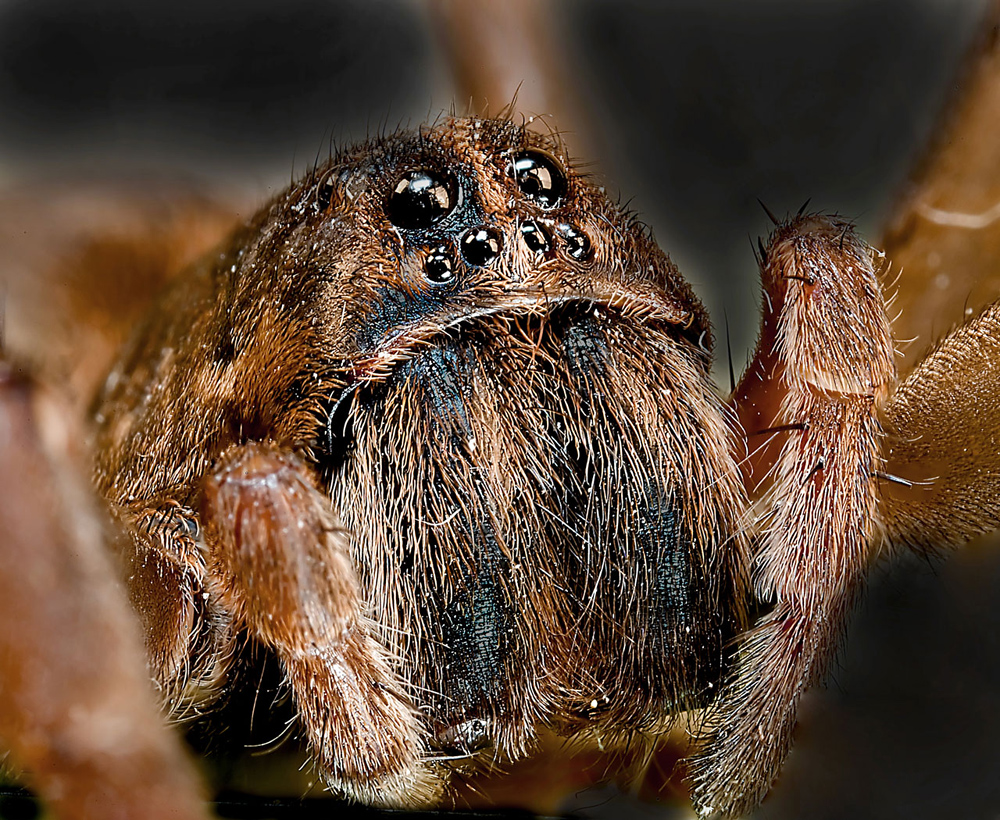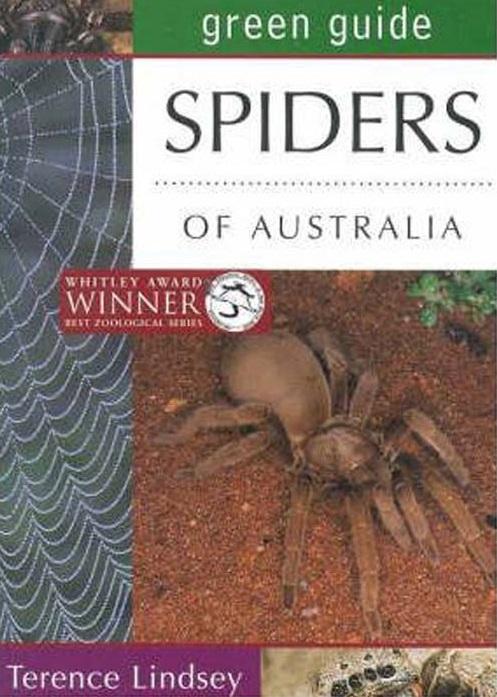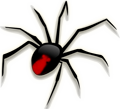
|
Wolf Spider
Allocosa obscuroides
Other Names: Lycosa obscuroides, similar to Tasmanicosa Sp. Family: Lycosidae (Wolf Spiders). 130 known species in Australia, most in the genus Lycosa. Many other Australian species of wolf spiders are similar in appearance. Size: Body 15-18 mm Distribution: Species of wolf spiders are found in a very wide range of habitats, from deserts to rainforests. Habitat: Wolf spiders are ground dwellers and many species make burrows. They have extremely good vision and can see polarised light, which gives them exceptional skill at navigating. References: Find-A-Spider Guide. Brunet. Whyte and Anderson. About the Wolf SpiderWolf spiders get their name from their hunting style of chasing and running down their prey, like a wolf or dog would. A closely related wolf spider in the genus Lycosa, Lycosa tarantula, is the species that was originally called the tarantula. It was named after the city of Taranto in Italy, where it is found. In one of those strange quirks of science, the spiders now known as tarantulas are in a completely different family (Theraphosidae). There was once a traditional belief that if one of these "tarantula wolf spiders" bit you, it would lead to a hysterical condition known as "Tarantism" for which the only cure was to dance a special dance called the tarantella. This is now understood to be completely false and these spiders are not regarded as dangerous to humans. Danger: Australian wolf spiders are not especially dangerous, though they can cause transient pain and sickness. At least one source says they can be deadly to smaller animals such as cats and dogs. According to Whyte and Anderson, "human bites have been recorded with various unpleasant but usually short-lived results, the worst being acute pain for 10 minutes to an hour, local swelling, redness and itchiness. Dizziness, rapid pulse and nausea have been reported." Note that dead spiders usually fade in colour, so nearly all the spiders will look blacker or darker in colour in real life than they do in the photos of dead spiders from the museum.
Recommended ReadingSee Also
Australian Mammals Share This PageContent is copyright © Survive.au 2005-2025 All Rights Reserved. Terms of Use. Definitely read the disclaimer before trying anything from this website, especially including the practices and skills. This website uses affiliate links – this doesn't cost you any more, but I get a commission on purchases made through the website. As an Amazon Associate I earn similarly from qualifying purchases. |
